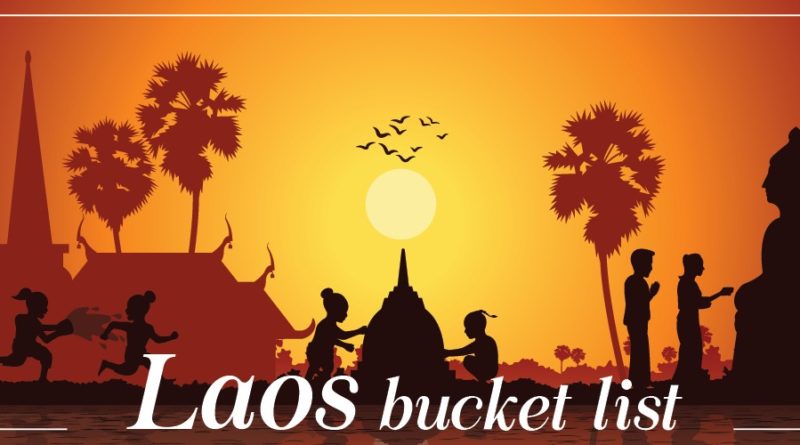Lao’s Bucket List
Whether you have lived in Lao for a long time, recently moved here, or are just passing through there are some things in Laos that you just can’t miss. Here we have listed a few of our personal highlights
Luang Prabang
Can you even say you’ve been to Laos if you haven’t visited this charming UNESCO World Heritage City? The former royal capital showcases a mix of colonial French architecture with some of Lao’s most stunning temples, incredible restaurants, breathtaking sunsets, and incredible handicrafts is a must see destination for expats and tourists.
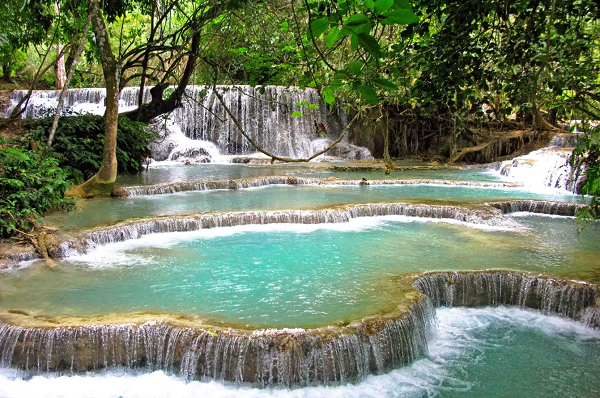
Luang Prabang is also the home of Kuang Si waterfalls, Lao’s most visited and most recognisable tourist attraction. The multitiered waterfall cascades down limestone rocks into turquoise pools creating an idyllic setting for locals and visitors to relax.
On your way back from the falls to Luang Prabang be sure to stop at Lao’s only buffalo dairy and try some of their incredible buffalo cheese and learn about how this social enterprise is changing lives and attitudes. Be sure to be back in town in time to catch the sunset over the Mekong from the treehouse at the Ock Pop Tok Living Craft Centre.
The Nam Song River
The Nam Song River runs through Vang Vieng and is host to Lao’s famous tubing experience. Despite being much more subdued and (comparatively) safe than it was at the height of its infamy, tubing is still very much a young person’s adventure.
Riverside bars play loud music and are mostly patronised by young backpackers in revealing swimsuits. If that’s your cup of tea or for those looking to partake in some day drinking on the river this experience can not be missed and has long defined the backpacker experience in Laos.
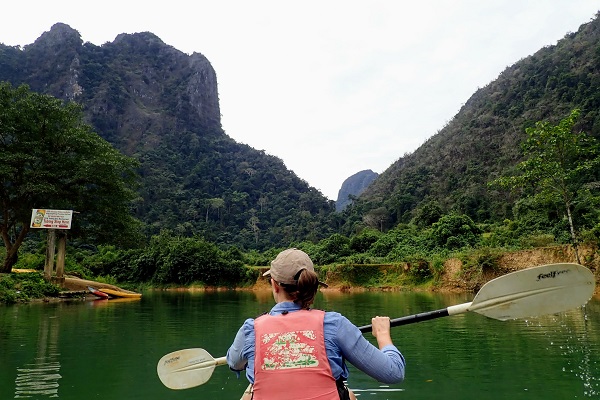
However for those looking for a more sedate experience many of the eco tourism companies in Vang Vieng offer kayaking tours on the Nam Song. Kayaking down the river, surrounded by limestone mountains is one of the most enjoyable experiences in Laos. But if even that sounds like too much effort then you can hire a motorised long tail boat to take you up the river at sunset and enjoy the landscape that way.
Vang Vieng is not the party capital it once was. While there are still plenty of backpackers and hostels offering free “whiskey” there are a wide range of other options including five star accommodation and great restaurants. The scenery around town is incredible and easily accessible by scooter or bicycle. The Vang Vieng experience is a must for everyone staying in Laos and a great weekend get away from Vientiane.

Kong Lor Cave
One of Lao’s most incredible natural attractions is the Kong Lor Cave, located in Khammouane Province. It has been carved out over centuries by the Nam Hin Boun River, which flows through the cave. The cave runs under a mountain for 7km but can be traversed by boat or kayak.

Tickets for the motorised boat can be arranged at the cave entrance and do not require advanced booking. Kayaks can only be organised as part of a package tour through Green Discovery and will include ziplining at the Rock Viewpoint at Phou Pha Marn the following day. Floating through the cave is a pretty incredible experience. At some points the cave expands out into huge caverns, almost 100m high
Getting to the cave from Vientiane is relatively easy with private transport and is a popular stop on the Thakek Loop. It takes around 6 hours to drive from Vientiane, so you will probably need to spend the night nearby. There are a few accommodation options nearby ranging from basic guesthouses to an upmarket resort. Alternatively you can stay in the nearest town, Na Hin, which has a few guesthouses and a few restaurants.
Phonsavanh
Phonsavan is home to another of Lao’s UNESCO World Heritage Sites, the Plain of Jars. As well as this famous attraction there are many other attractions in this town, making it a destination you must visit before leaving Laos. So much has already been written about the Plain of Jars that we have decided to list some of the other attractions that make Phonsavan so much more than just a base to see the mysterious jars.
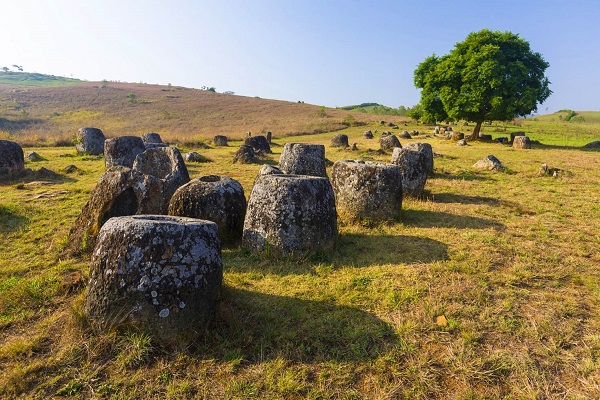
As well as the mysterious Plain of Jars, Phonsavan is home to the Xiengkhoung Provincial Museum, regarded as one of the best museums in Laos and has been called the best provincial museum in South East Asia. It houses an impressive and informative collection detailing the prehistory of the area, the different ethnic groups of the province, and an excellent exhibit on the Indochina Wars and its devastating effects on the province.
While visiting Phonsavanh be sure to visit the Mulberries Organic Silk Farm. This lovely silk farm specialises in handmade fair trade silk products, and was the first organisation in Laos to be certified as fair trade by the World Fair Trade Association.

The founder of Mulberries, Kommaly Chanthavong, was nominated for the Nobel Peace Prize in 2005 for her work promoting women’s employment and traditional skills. Visiting the farm allows you to learn about how silk is made, the traditional production and weaving processes, and the cooperative employment and pay systems. There is also a fantastic gift shop where you can buy some of the best silk products in Laos.
Phonsavanh is home to two UXO visitor centres, MAG and the UXO Museum, that provide excellent information on the lasting impact of the Indochina War. Learn about how Lao became the most bombed country in the world and what different organisations are doing to help the country recover.
Elephant Conservation Centre
Laos was once known as the ‘Land of a Million Elephants’, however this number has dwindled dramatically. It is estimated that there is now less than 800 elephants in Laos, with less than half of this number in the wild. One of the places that is trying to reverse this trend is the Elephant Conservation Centre, located in Sayaboury Province.

Guests can visit the ECC and stay for one or two nights and learn about their breeding, rehabilitation and soft release programs. Accommodation is rustic but clean, with bamboo bungalows providing views of the lake, or upgrade to the Rosewood Lodge for a more stylish stay. The on-site restaurant makes delicious Lao food and serves a small collection of cold drinks.
There are also kayaks on site that guests can use to explore the lake. However the main attraction is definitely the elephants. Guests will learn about the elephants lives, the threats to their continued existence, issues with human/elephant conflict, issues with tourism, and the complicated nature of elephant tourism.
Guests will have the opportunity to observe the elephants in their natural environment as they follow them through the forest. Guests will also have the chance to meet the elephants up close just before their daily bath, a great way to finish the day.
As the only elephant sanctuary in Laos working towards releasing elephants back into the wild this is an incredibly unique project and one that should be one the bucket list for everyone living in Laos.
Champasak Province
Lao’s southern-most province is home to a number of bucket list items for anyone living in Laos. Here you can visit Wat Phou, an ancient temple from the Khmer Empire. This UNESCO World Heritage Site is often described as Lao’s smaller version of Angkor Wat. While it might not be as big as Angkor Wat, Wat Phou is an interesting part of the ancient history of Lao and a great place to explore for an afternoon.
Just down the river from Wat Phou are the 4000 Islands, or Si Panh Don. This collection of islands are a beautiful slice of rural Laos, and are a must visit location. While there you can explore some of the larger islands by bike or explore the river by kayak or motorboat. Be sure to take a boat trip to see the critically endangered Irrawaddy Dolphins, as well as the two waterfalls in the area.
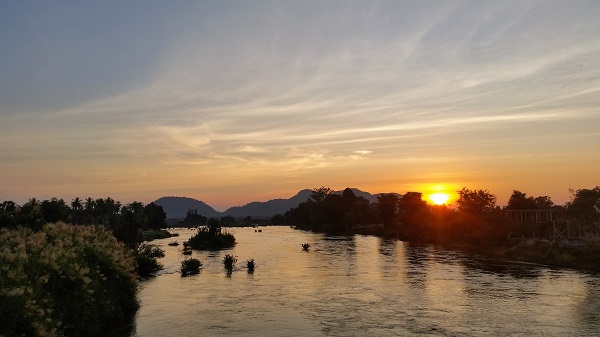
Champasak is also home to the Bolaven Plateau, home of Lao’s coffee industry and some of the country’s most spectacular waterfalls. Spend a few days exploring the plateau, discovering coffee plantations and chasing waterfalls. Be sure to stop at Tad Fan, Lao’s tallest waterfall, where two rivers plunge 120m down into a limestone gorge. While on the plateau you can also stop at coffee producers to try different types of locally grown coffee. If you want to see the coffee harvest it takes place between December and January, which is a lovely cool time of year on the plateau.
While by no means definitive, this is our list of some of the bucket list items that expats staying in Laos must do before they leave. What did you think? Is there an experience we missed that you think we should have included? Let us know in the comments below!
by David Ormsby, copyright J&C Services 06/2020

